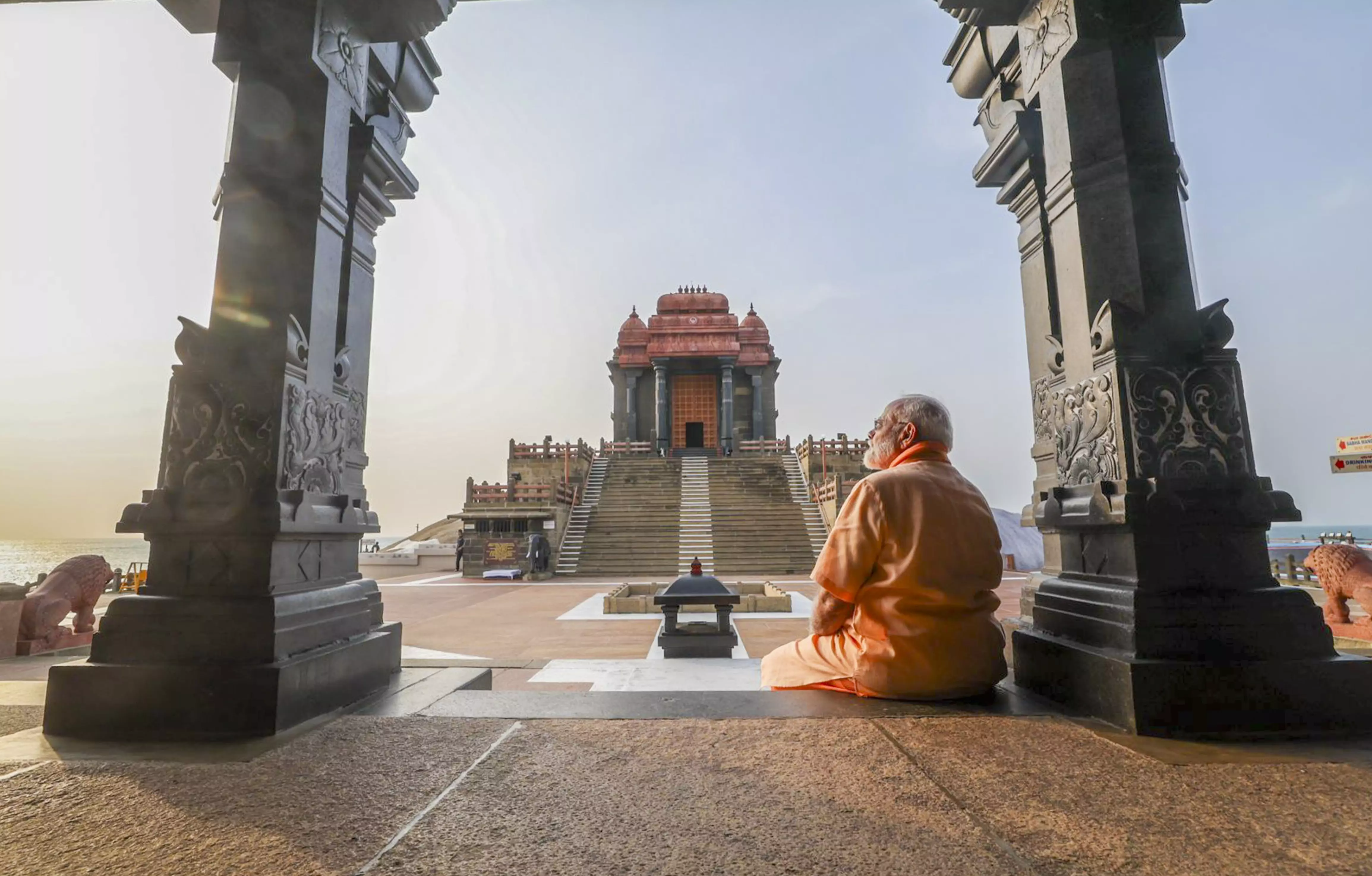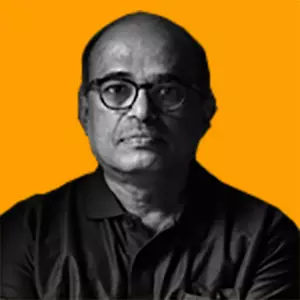
- Home
- India
- World
- Premium
- THE FEDERAL SPECIAL
- Analysis
- States
- Perspective
- Videos
- Sports
- Education
- Entertainment
- Elections
- Features
- Health
- Business
- Series
- In memoriam: Sheikh Mujibur Rahman
- Bishnoi's Men
- NEET TANGLE
- Economy Series
- Earth Day
- Kashmir’s Frozen Turbulence
- India@75
- The legend of Ramjanmabhoomi
- Liberalisation@30
- How to tame a dragon
- Celebrating biodiversity
- Farm Matters
- 50 days of solitude
- Bringing Migrants Home
- Budget 2020
- Jharkhand Votes
- The Federal Investigates
- The Federal Impact
- Vanishing Sand
- Gandhi @ 150
- Andhra Today
- Field report
- Operation Gulmarg
- Pandemic @1 Mn in India
- The Federal Year-End
- The Zero Year
- Science
- Brand studio
- Newsletter
- Elections 2024
- Events
- Home
- IndiaIndia
- World
- Analysis
- StatesStates
- PerspectivePerspective
- VideosVideos
- Sports
- Education
- Entertainment
- ElectionsElections
- Features
- Health
- BusinessBusiness
- Premium
- Loading...
Premium - Events

Modi wanted to be the rock upon which a new Hindu India would be built; the shocking electoral results will hopefully awaken him from his dangerous delusions
On May 28 last year, an important event in Indian parliamentary democracy took place. But in the heat of the electoral battle this year, no one recalled the inauguration of the new Parliament building by Narendra Modi. For the Prime Minister, it was not just a new building beside the old circular Parliament building with giant Gothic pillars. The new Parliament would be the symbol of the resurgent Hindu India of which Modi would be the biggest pillar.
To signify that, Modi was surrounded by a posse of about 20 Brahmin priests — mostly from Tamil Nadu’s mathas — as he triumphantly entered the Parliament building holding the Sengol, a sceptre once crafted in Tamil Nadu for the coronation of the Hindu kings of the Chola empire as a symbol of power. No senior parliamentarians who upheld the values of parliamentary democracy all these years accompanied him. To the outsider, that picture would seem to be the inauguration of a temple. Modi’s intention was exactly that. Religion and state had officially become one that day.
The priest-PM
To pivot religion into the forefront of national consciousness was always the primary intention of Modi, and that plan came to fruition that day. He also installed the Sengol — which was gifted to Nehru — next to the Speaker’s chair, as if to reemphasise his intention. In that function, Modi also participated in a puja dressed like a Brahmin priest, though he could not have been dressed like one. A Brahmin priest has the sole authority over temple rituals, but Modi was in no mood to play second fiddle, though a few senior priests were present to supervise the rituals.
Modi appropriated that role, just like he did on many other occasions during his 10-year tenure, dressing up like a monk or Brahmin or Hindu priest on close to a hundred occasions. Nowhere else was Modi filled with total contentment than when he was in his Brahmin avatar, deified and adorned. Not for him the ephemeral clothes of a politician whose job itself is transitory in nature. In such roles, he effortlessly, and without any dissenting notes from the fully adulatory and fawning party, appropriated temporal and religious power.
Nowhere else was Modi filled with total contentment than when he was in his Brahmin avatar, deified and adorned.
Not enough of divinity
During the inauguration of the Ayodhya temple too, the destruction and reconstruction of which was at the very basis of his climb to power, Modi was at his Hindu best, officiating as if he was the priest and prime minister rolled into one.
Rather unfortunately, these two nationally televised and tom-tommed inauguration episodes, in which Modi was Brahmin and PM at once, have completely or suddenly been forgotten by the audience he targeted it at. This image of the PM as priest or religious head was not gaining any traction, and the Parliament and Ayodhya temple inauguration were dumped as electoral issues by the party itself.
But Modi himself had not had enough of his religious roles, and he continued wearing his Brahmin robes wherever possible. He craved to be a Brahmin for ever. He has meditated twice inside caves, one in Kedarnath, where only cameras were present. Obviously, he believed he could convince Indians that total enlightenment was close at hand. Nirvana was just an election away.
Turning to Christian philosophy
So, it was not a surprise that towards the end of his 10-year tenure, those delusions of divinity and immortality had metamorphosed into 3D reality. Modi announced in an interview he was God incarnate who was born not though biological means, suggesting that he was born through immaculate conception, a largely held Christian philosophy.
It was a well-thought-out pronouncement. By saying so, Modi, who was the high priest of the government and the country all this while, was trying to become the God of the country, and all that remained was the minor inconvenience of a formal announcement of his 400-seat victory, which was only a matter of a few days.
He or his image planners, of which there are many in the PMO, were trying to borrow from Christian philosophy where immaculate conception is central in the Catholic church. Mary, the mother of Jesus, is believed to have been born without the “original sin” and hence the Catholic church observes December 8 as the day of Immaculate Conception. The Protestants do not believe in Immaculate Conception, but for Modi, this divine concept offered immense possibilities in the elaborate charade of image-building that characterised his tenure.
The final frontier
Now, all that remained was to attain Nirvana like Swami Vivekananda and thus emerge as a real God in front of cameras. Modi shut himself up in the mediation room at Vivekananda Rock in Kanyakumari last week, and the picture of him meditating was splashed compulsorily through all media.
By meditating there, Modi would align himself with Swami Vivekananda himself, who swam 500 metres across the sea to reach the rock where he meditated three days and nights and is believed to have attained enlightenment. Tourist guides would from now on point to the rock, which is accessible by boat, and say: “Swami Vivekananda and Modiji meditated there on that rock.”
The choice of the rock at the tip of India was ideal, spiritually and symbolically. The rock has other symbolisms as well, not just the connection to Swami Vivekananda. It is also believed to be the place where Goddess Kanyakumari did tapas for Lord Shiva. Since the rock has many such Hindu religious meanings, it was ideal place for Modi to continue with his divinity plans.
Back to Earth
Modi’s delusions were now moving him closer to the divine. After wrapping himself with Hindu divinity both by attire, behaviour, meditations, and many nationally publicised pujas, the Kanyakumari rock was another symbolically important place. The Kanyakumari meditation trip, while neatly choreographed, was also intended to add other divine meanings to his persona, and certain Christian elements came in quite handy. The Church is believed by many Christian factions as built on St Peter the rock. Jesus Christ is quoted as telling St Peter, one of his disciples: “And I tell you, you are Peter, and upon this rock I will build my church, and the powers of death shall not prevail against it.”
Modi wanted to be the rock upon which a new Hindu India would be built. Many efforts were made in that direction over the past 10 years, the Ayodhya temple being central to that plan. However, the shocking results that awaited him the day after he returned from the land’s end of India will hopefully awaken the PM from his dangerous delusions. There is nothing like heading a minority government for a godly PM to be badly crippled and come down to earth.


